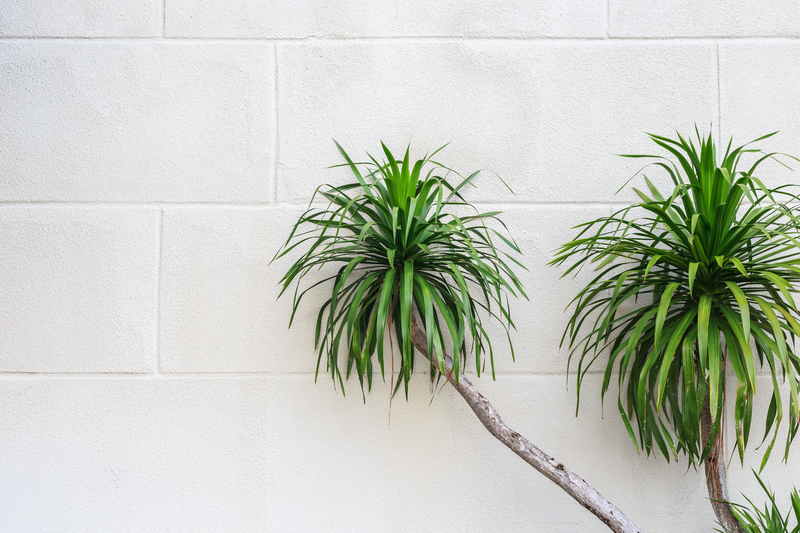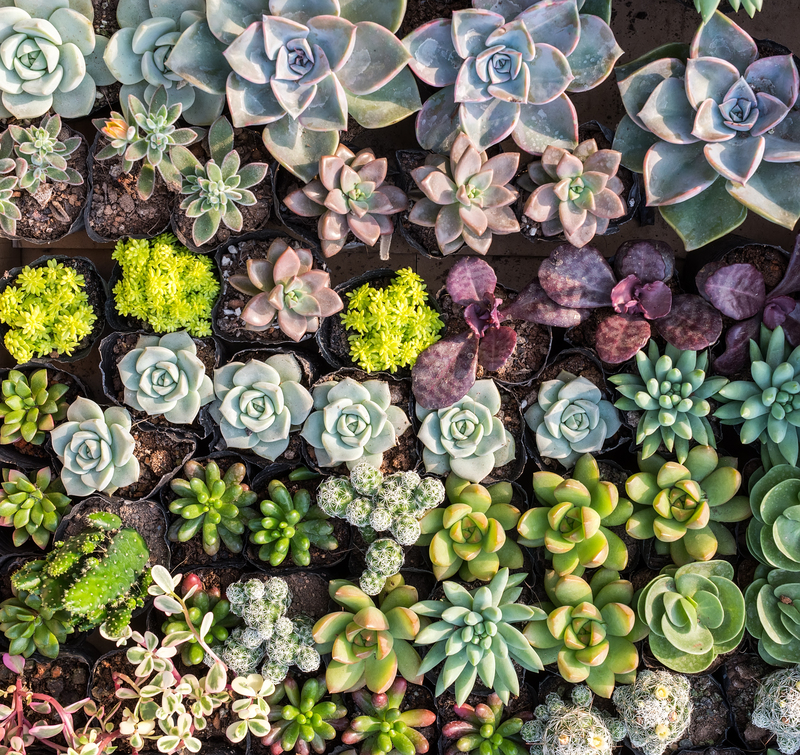Maximize Space Efficiency through Vertical Gardening
Posted on 18/08/2025
Maximize Space Efficiency through Vertical Gardening: The Ultimate Guide
In an era where urban living spaces are shrinking and the demand for sustainable living grows, utilizing every inch of available area has become crucial. Vertical gardening presents innovative solutions for those seeking to transform walls and narrow balconies into lush, productive ecosystems. This comprehensive article explores how you can maximize space efficiency through vertical gardening, providing actionable tips, creative ideas, and answers to your most pressing questions about this eco-friendly gardening technique.

What is Vertical Gardening?
Vertical gardening is the practice of cultivating plants on vertically inclined surfaces, such as walls, fences, or specially designed structures. Rather than spreading plants horizontally in beds or pots, vertical gardens grow upward--making them perfect for limited-space environments such as apartments, balconies, and even office spaces.
These gardens are often modular, allowing for customization based on available space and sunlight. Beyond space-saving, vertical gardens offer numerous benefits, including improved air quality, reduced urban heat, and enhanced aesthetics.
Why Opt for Vertical Gardening?
- Maximized Space Usage: Utilize walls, trellises, and even unused vertical surfaces for planting.
- Urban Agriculture: Grow food and ornamentals in high-density city settings with minimal horizontal area.
- Environmental Benefits: Filter airborne pollutants and reduce the heat-island effect in metropolitan neighborhoods.
- Enhanced Privacy and Beauty: Transform bland walls into vibrant, living art pieces.
Planning Your Vertical Garden for Maximum Efficiency
To maximize space efficiency with vertical gardening, thoughtful planning is key. Consider these factors as you begin:
Assess Your Space
- Wall Location: Determine whether your space is indoors, outdoors, on a balcony, or against a fence.
- Sunlight Exposure: Monitor how much sunlight your chosen vertical surface receives daily. This will influence plant selection.
- Structural Integrity: Ensure the wall or structure can support the combined weight of plants, soil, and containers, especially after watering.
Choose the Right Vertical System
- Living Walls: Modular panels or felt pockets mounted to walls, suitable for both residential and commercial settings.
- Trellises and Lattices: Ideal for climbing plants like beans, peas, or flowering vines.
- Vertical Planters: Utilize tiered shelves, stacked planters, or hanging containers to accommodate a variety of species.
- Pallet Gardens: Repurpose wooden pallets by adding landscaping fabric and filling each shelf with soil and plants.
Best Plants for Vertical Gardening
Plant selection is essential for successful and efficient use of vertical space. Some species naturally adapt better to upward growth or confined soil volumes.
Edible Plants for Vertical Gardens
- Herbs: Basil, mint, oregano, thyme, rosemary, and cilantro thrive in small pockets or planters.
- Leafy Greens: Spinach, lettuce, arugula, and swiss chard are perfect for shallow containers and frequent harvesting.
- Strawberries: Varieties like Alpine strawberries work beautifully cascading from wall planters.
- Climbing Vegetables: Beans, peas, cucumbers, and even small varieties of tomatoes and squash flourish on trellises.
Ornamental Plants for Vertical Walls
- Succulents: Drought-tolerant and require minimal soil depth. Create stunning patterns with different colors and textures.
- Ferns: Great for shaded walls, adding lushness and oxygenating the environment.
- Trailing Plants: English ivy, pothos, philodendrons, or creeping jenny can elegantly drape down panels or planters.
- Flowering Species: Petunias, impatiens, begonias, and nasturtiums provide continuous color and nectar for pollinators.
Installing Your Vertical Garden: Step-by-Step
Maximize your small space by following these actionable steps to set up your vertical garden:
- Design Your Layout: Use graph paper or gardening software to sketch your wall, plotting plant arrangement based on sunlight and water preferences.
- Prepare the Structure: Install brackets, shelves, or modular panels securely. If using a pallet, staple landscape fabric to the back and bottom to retain soil.
- Add Quality Soil: Use premium potting mixes rich in organic matter. Consider adding slow-release fertilizer for longer-lasting nutrition.
- Plant Selection and Placement: Group plants with similar light and irrigation needs together for optimal health and minimal maintenance.
- Watering System: Install a drip irrigation system or self-watering pots to maintain consistent moisture across all levels.
- Monitor and Maintain: Regularly check for pests, prune as needed, and fertilize periodically to keep your vertical garden lush and productive.
Maximizing Productivity in Small Spaces
Space-efficient vertical gardens are not limited to ornamental displays--they can be highly productive food systems. Here's how to increase your output:
Succession Planting
- Rotate Crops: When one crop finishes, immediately replant with another to make full use of each planter season-round.
- Interplanting: Combine tall, vining crops with low-growing herbs to maximize root and foliage space.
Multi-Tiered Systems
- Design vertical setups with stacked plant boxes or pyramidal planters to fit more plants without overcrowding.
- Multiply yields by growing upward, especially with fast-growing crops that thrive in limited soil.
Efficient Watering and Drainage
- Use self-watering systems, reservoirs, or automated drip irrigation for consistency and to prevent under or overwatering.
- Ensure all levels drain adequately to avoid root rot, particularly for bottom rows.
Creative Ideas to Maximize Space with Vertical Gardens
Looking for inspiration? Vertical gardening can be customized in numerous innovative ways, suitable for any style or space:
Pocket Planters
- Fabric or felt pocket planters are lightweight and easily attached to fences or sunny walls, ideal for herbs and small greens.
Upcycled Materials
- Repurpose shoe organizers, plastic bottles, or tin cans as hanging or stacked planters.
- Transform gutters into cascading rows for lettuce or strawberries along railings.
Edible Walls
- Frame your balcony with vertical panels covered in lettuce, basil, or microgreens for convenient harvesting and added privacy.
Living Room Dividers
- Install free-standing vertical towers indoors as natural room separators, filled with air-purifying houseplants.
Common Challenges and How to Overcome Them
While maximizing space efficiency through vertical gardening opens up exciting possibilities, some common challenges may arise:
- Drought Stress: Vertical gardens dry out more rapidly--install drip irrigation and mulch to counteract evaporation.
- Uneven Growth: Ensure even sunlight and watering across all levels by rotating plants or adjusting your design seasonally.
- Pest and Disease Management: Monitor regularly for fungus, aphids, and snails. Use organic solutions and maintain air circulation to reduce risk.
- Structural Safety: Regularly inspect mounts and anchors, especially after storms or if using outdoor installations.
Eco-Friendly and Sustainable Benefits
Vertical gardening maximizes space but also contributes to a greener future in several key ways:
- Urban Biodiversity: Attracts pollinators such as bees and butterflies, even in concrete-heavy environments.
- Thermal Insulation: Living walls provide insulation--keeping buildings cooler in summer and warmer in winter.
- Air Purification: Plants naturally filter toxins and dust, improving indoor and outdoor air quality.
- Reduced Food Miles: Grow your own produce right where you live, cutting down on transportation emissions.
Expert Tips to Maximize Success with Vertical Gardening
- Start Small: Experiment with a few panels or shelves before expanding to larger wall installations.
- Mix Plant Varieties: Blend colors, shapes, and growth habits for the most visually rewarding effect.
- Prioritize Maintenance: Vertical gardens can dry quickly and accumulate pests--regular attention pays off in longer-lasting beauty and productivity.
- Use Lightweight Growing Media: Opt for peat-free compost, coir, or perlite mixes to reduce overall weight.
- Go Modular: Modular systems allow you to reconfigure and expand your garden easily as your confidence and needs grow.

Frequently Asked Questions
Do Vertical Gardens Really Save Space?
Absolutely. By cultivating upwards, vertical gardening allows you to grow many more plants per square foot than conventional horizontal beds, making it perfect for patios, balconies, and small backyards.
Is Vertical Gardening Suitable for Indoors?
Yes! Many modular systems and pocket planters are designed specifically for indoor environments. Select low-light tolerant species, and ensure adequate humidity and ventilation.
What Maintenance Does a Vertical Garden Require?
Routine tasks include watering, fertilizing, occasional pruning, and pest management. Drip irrigation systems can dramatically reduce maintenance time and complexity.
Can I Grow Fruits and Vegetables in a Vertical Garden?
Several compact or climbing fruit and vegetable varieties adapt perfectly to vertical setups. Choose strawberries, dwarf tomatoes, pole beans, peas, and occasionally cucumbers or squash for bountiful harvests.
How Do I Prevent Water Runoff and Staining?
Use waterproof backing or trays to catch excess water, especially on indoor wall gardens. Self-watering containers with drainage control safeguard walls and floors.
Conclusion: Transform Your Space with Vertical Gardening
Maximizing space efficiency through vertical gardening is not only a smart solution for urbanites and small space dwellers--it also promotes wellness, sustainability, and artistic expression. Whether aiming to cultivate fresh produce, fragrant herbs, or a tapestry of blooms, vertical gardens empower you to revitalize the most underutilized parts of your living area.
Begin planning your own vertical oasis today, and experience how growing up--literally--can transform your space and your lifestyle.
- Maximize your gardening potential--no matter your square footage.
- Enhance your environment--from improved air to increased beauty and privacy.
- Embrace sustainability--and contribute to a greener, healthier urban world.
For more innovative tips on space-saving and efficient gardening, explore your local nursery or search digital gardening communities--your wall could be the next lush masterpiece in your neighborhood!

